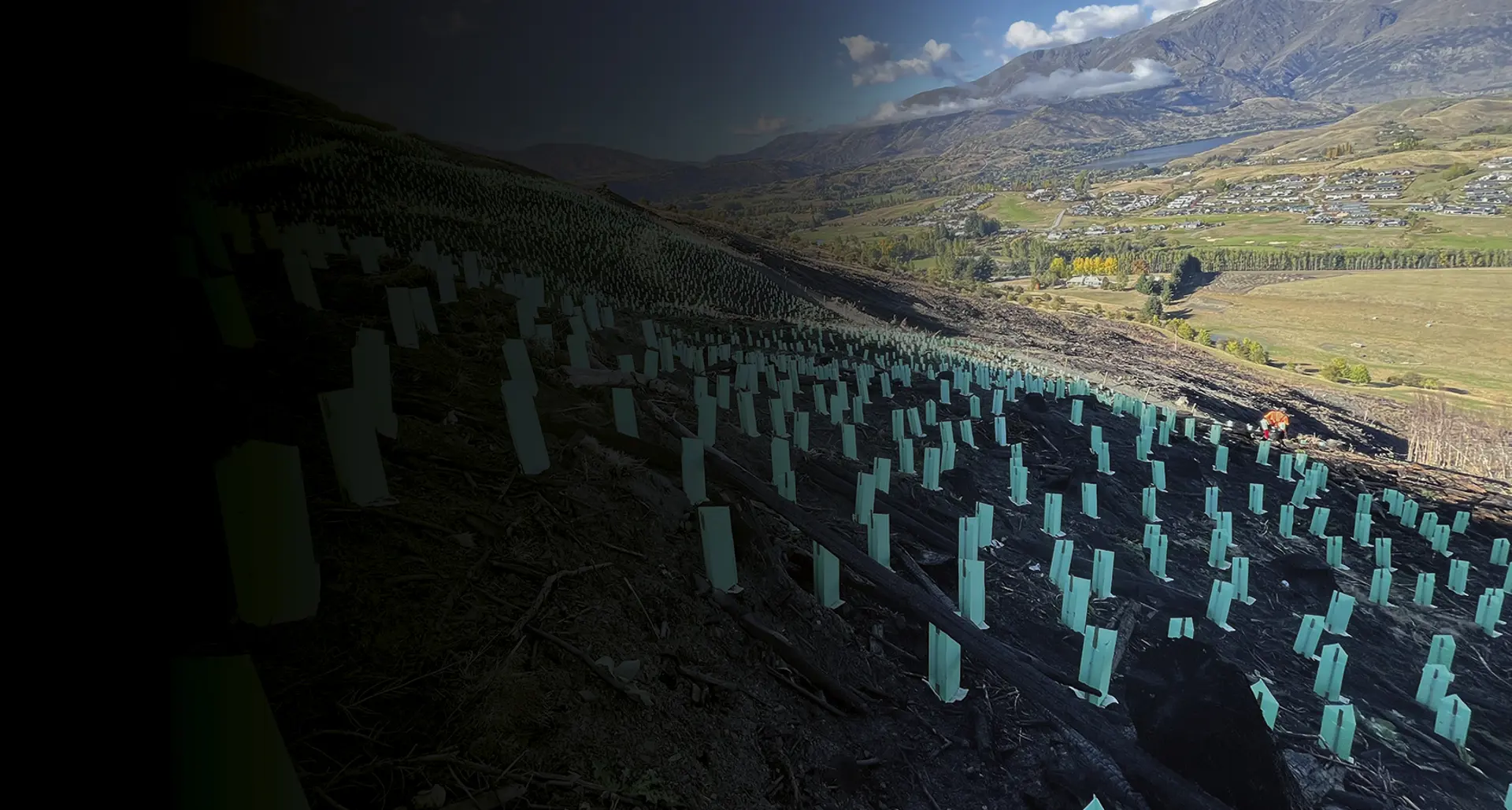
The tech and teamwork driving Project Tohu
Project Tohu is redefining ecological restoration in Aotearoa by integrating cutting-edge technology, like GIS mapping, smart predator traps, and real-time digital monitoring, into a large-scale indigenous revegetation effort that blends cultural values, scientific precision, and climate resilience.
Share this page
-
Queenstown Lakes District Council (QLDC) is proud to lead Project Tohu, one of Aotearoa’s most ambitious indigenous revegetation programmes. Spanning 200 hectares on the south-facing slopes of Coronet Peak near Arrowtown, the project will see over 500,000 eco-sourced native grasses, shrubs, and trees planted to restore biodiversity and build climate resilience.
Delivered in partnership with Te Tapu o Tāne (a Ngāi Tahu ki Murihiku-owned charitable company), Citycare Property, and environmental science consultancy e3Scientific, Project Tohu reflects QLDC’s commitment to collaborative restoration at scale, where a te ao Maori approach, scientific integrity, and community action converge.
Spring on the slopes: monitoring takes centre stage
This spring is a quieter time on the slopes of Coronet Peak when it comes to planting, with the next major planting effort planned for autumn 2026. But while the spades are temporarily down, the restoration effort continues, driven by monitoring, data, and digital tools that keep momentum going year-round. What makes Project Tohu stand out is its embrace of technology; not as an add-on, but as a core part of how restoration is planned, tracked, and refined. From spatial mapping to ecological modelling, a range of smart systems are now embedded across the site, helping guide planting and monitor progress with precision. At the heart of this is a suite of smart systems guiding and tracking progress across the site, including:
- GIS & LiDAR elevation mapping to overlay terrain, hydrology, and biodiversity data
- Digital field logging to monitor plant survival and site conditions in real time
- Smart predator traps capable of self-resetting and rebaiting (49 times more efficient than single set traps).
While smart systems offer precision and efficiency, they’re grounded by more traditional techniques like manual plant health checks, seasonal soil and water monitoring, and ecological surveys. This duality of approach ensures that every decision is informed, every action is intentional, and the whenua is protected in real-time but with a long-term vision.
Embedded in the district’s climate future
Project Tohu is a flagship initiative in QLDC’s Climate & Biodiversity Plan 2025–2028, adopted on 28 August 2025. The plan commits to accelerating transformation through partnerships and embedding Te Taiao, the natural world, at the heart of decision-making.
Project Tohu demonstrates how large-scale ecological restoration can combine cultural partnership, scientific rigour, and community collaboration. The plan reinforces the importance of measurable indicators, expanded partnerships with mana whenua, and stronger accountability, all actively being trialed and refined on the slopes of Coronet Peak.
This project is a powerful example of climate action in practice. Native reforestation helps absorb carbon from the atmosphere, protect and rebuild healthy soils, and strengthen the landscape’s ability to cope with changing weather patterns. Unlike exotic species like wilding conifers, native plants form deep, diverse root systems that improve soil structure, reduce erosion, and store carbon more effectively over time.
Project Tohu also boosts biodiversity by creating habitat for native birds, insects, and plants, and will reconnect ecological corridors that support their movement and expansion. It’s a long-term investment in climate resilience, ecosystem health, and the cultural integrity of our landscapes.
With over 80,000 native plants already in the ground, and more to come, Project Tohu is not just restoring a landscape; it’s redefining how we restore, monitor, and care for our whenua in Aotearoa.
Did you know?
You may have noticed bright green sleeves dotting the Project Tohu site, but did you know that they’re part of a smart restoration strategy.
Designed for alpine conditions, TriGuard plant guards offer durability and stability in the face of snow, wind, and steep terrain. Their longer lifespan (typically 2–4 years) means fewer replacements and less disruption to growing seedlings.
And when their job is done? They’re fully recyclable, often repurposed into fence posts, giving them a second life in the landscape.